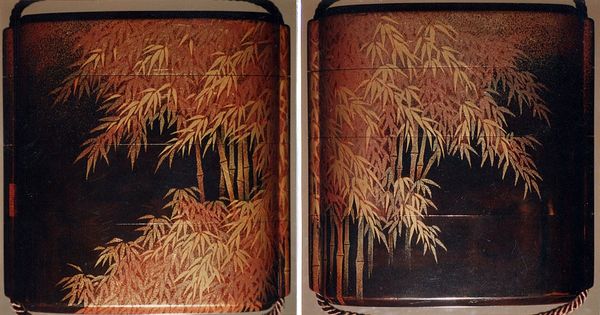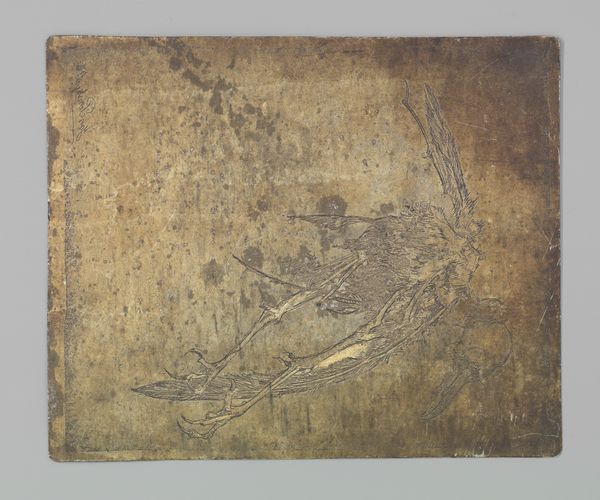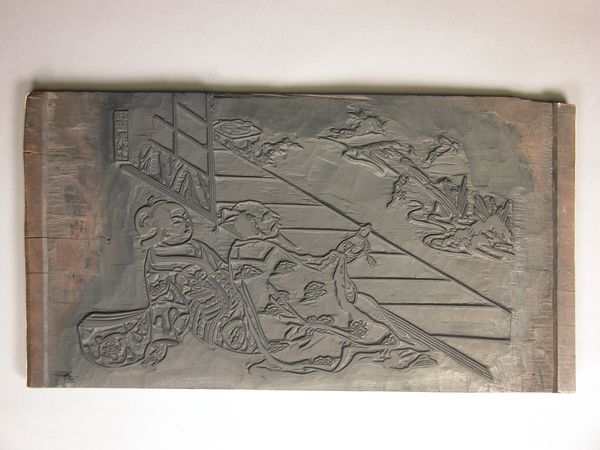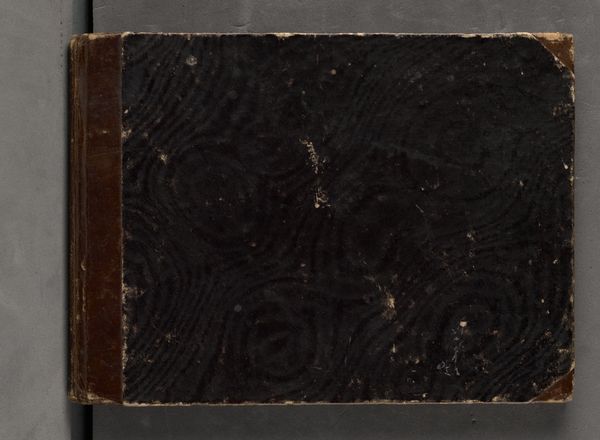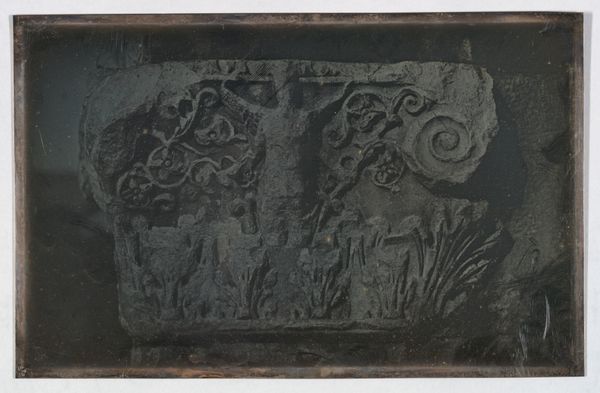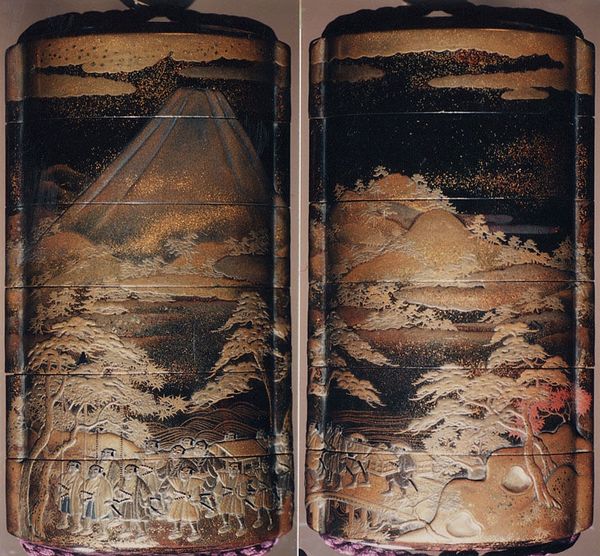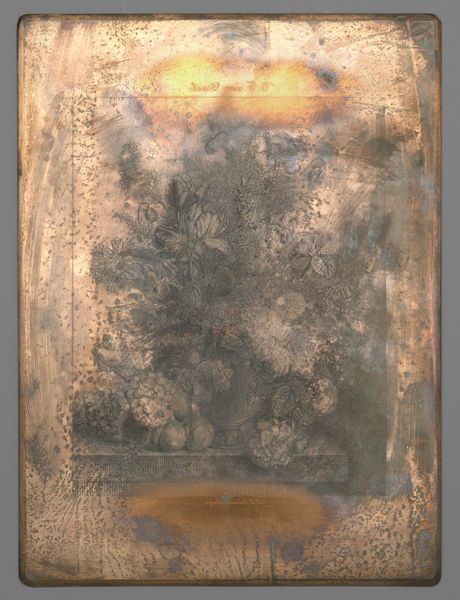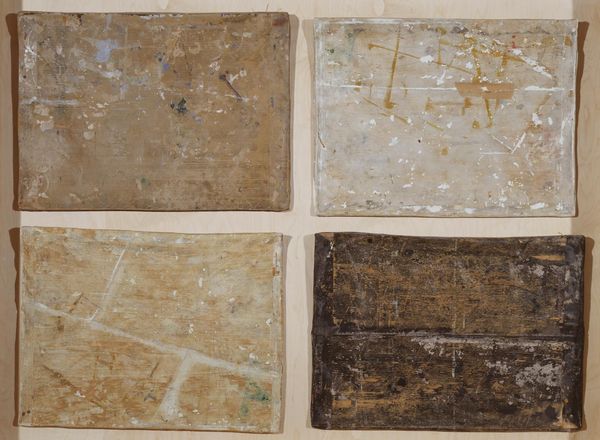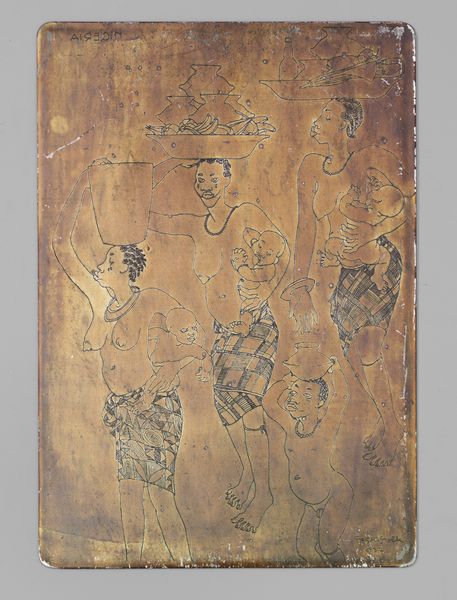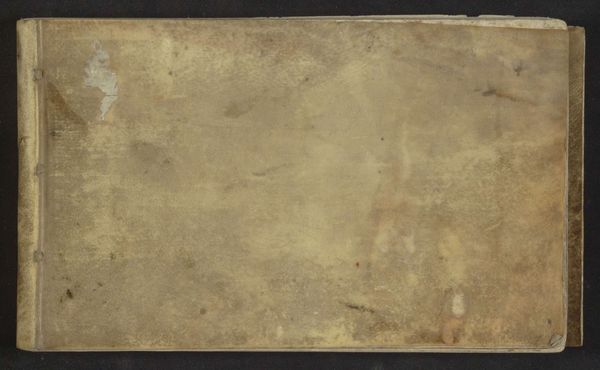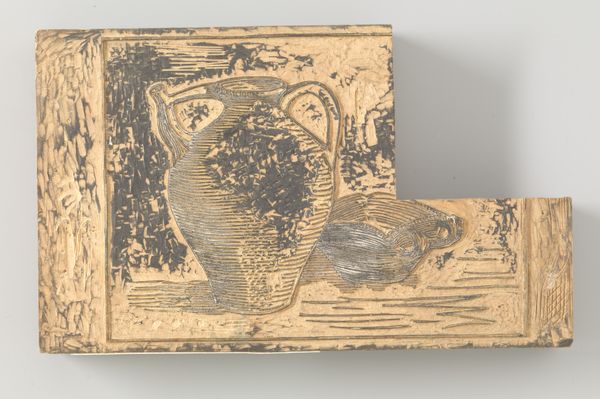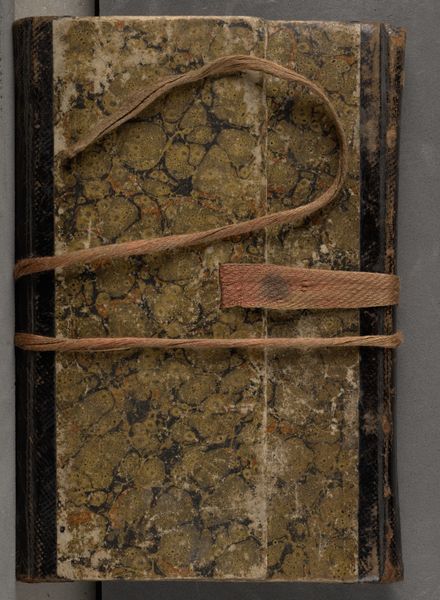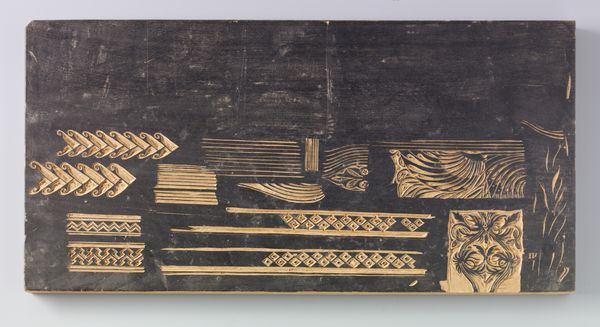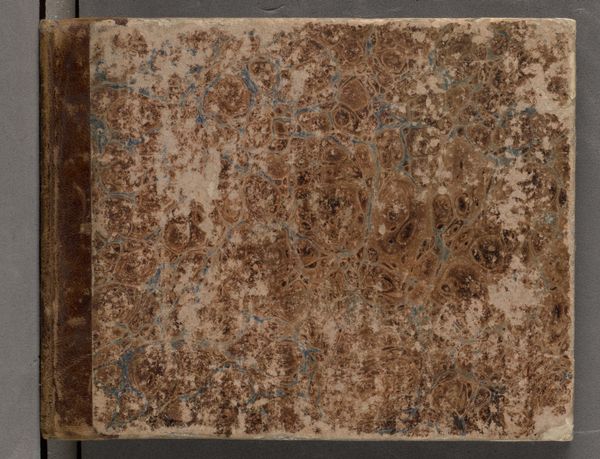
Case (Inrō) with Design of Buddhist Angel (obverse); Pine Forest (reverse) 1767 - 1799
0:00
0:00
mixed-media, relief
#
mixed-media
#
sculpture
#
asian-art
#
relief
#
landscape
#
ukiyo-e
#
geometric
#
orientalism
#
mixed media
#
miniature
#
calligraphy
Dimensions: 3 7/16 x 2 9/16 x 1 1/8 in. (8.7 x 6.5 x 2.9 cm)
Copyright: Public Domain
This is an Inrō case by Tōyō, crafted in Japan sometime around 1770. On one side, a Buddhist angel floats above stylized clouds. On the other, a pine forest spreads across the case's surface. Both summon powerful symbols. The Buddhist angel, or apsara, is a motif seen across Asia, from the celestial dancers of India to the winged figures in Buddhist art throughout the East. The clouds beneath her feet are not mere decoration; they represent a threshold, a connection between the earthly and the divine. Think of Renaissance paintings where angels tread upon clouds, bridging heaven and earth. The pine forest, too, resonates deeply. In Japanese art, the pine symbolizes longevity and steadfastness. This echoes primal human desires for permanence in a changing world. Like the wandering motifs in our Mnemosyne Atlas, these symbols recur across cultures and eras, evolving yet retaining their primal power. They tap into our collective memory, engaging us on a deeply subconscious level. This cyclical progression reminds us that symbols never truly die; they only transform.
Comments
No comments
Be the first to comment and join the conversation on the ultimate creative platform.
